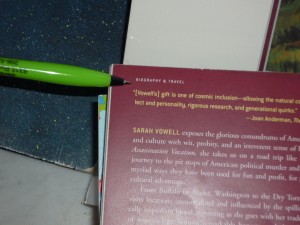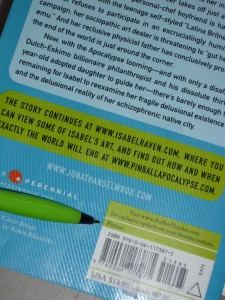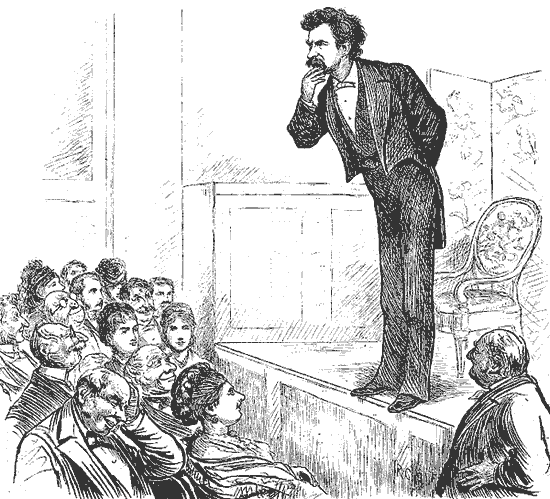Last time, I raised the scary, scary specter of the mismatched pitch meeting, the not uncommon conference nightmare scenario where a writer walks into a scheduled pitching appointment, only to discover to her horror that the agent won’t even consider representing her kind of book. (Not because he’s mean or hates literature, mind you; it just means that he specializes in some other kind of literature.) The writer sits through the appointment, fighting back tears, wondering what on earth she’s done in a past life to deserve missing out on her one conference pitching opportunity — and stomps out breathing fire, cursing the conference’s organizers for having enticed her to the conference with the promise of pitching to an agent, then not providing a contact that could possibly do her any good.
Horribly nightmarish, isn’t it? Would it frighten you to know that I’ve seldom attended a large conference where it didn’t happen to at least a handful of attendees?
Which is why I can assure you that those who are most likely to succumb to this terrible fate are aspiring writers who rely blindly upon conference schedulers to hook them up with the perfect agent for their work. As I have suggested in my last couple of posts, this level of trust may not pay off for the writer.
Specifically, it may result in an agent’s stopping a pitcher half a sentence in with one of the hardest-to-hear sentences in the English language: “Oh, I’m sorry — I don’t represent that kind of book.”
I can feel some of you shying away from reading the rest of this post. “What a bummer, Anne,” some of you are sniffing, “go ahead and leap to the worst-case scenario. Way to scare me out of wanting to pitch at all.”
Sniff away, oh cynics, but actually, I have some really, really good reasons for bringing this up at the beginning of this series, rather than after I go over its nuts and bolts. First, obviously, now that I have brought up the possibility that all of you conference-goers might not be assigned to meet with the best agent for your book, I didn’t want you to be waking up in the dead of night, hyperventilating over the prospect of a mismatched meeting. Let’s exorcise that poltergeist as soon as possible.
The second and far more important reason: so you may be prepared if it ever happens to you. Heaven forbid, of course, but think about it: would you rather learn how to perform the Heimlich maneuver BEFORE the person next to you at the rubber chicken banquet, or during?
Some mismatches are unavoidable, after all — and much of the time, they are the result of simple bad luck. Agents get the flu and cancel their appearances at the last minute, for instance. Or get embroiled in the details a client’s deal, so the agency sends an alternate representative.
Who, being a different individual will inevitably have different literary tastes than the first. Chant it with me now, long-time readers: there is no such thing as a manuscript or book proposal that every agent in the industry will love. Agents specialize — and they have personal preferences, like anyone else.
At the risk of pointing out that the emperor’s garments are a tad scanty as he dodges behind that great big elephant in the room, agents and editors’ preferences sometimes switch rather abruptly and without a whole lot of publicity. So do market trends. It is not at all uncommon, for instance, for an agent whose sister has just had a baby suddenly to be interested in parenting books. Or for an editor who has just been mugged to stop wanting to read true crime.
What does this mean for a pitching writer, in practical terms? Often, that the person whose conference brochure blurb burbled excitedly about chick lit will shock half a conference crowd by announcing that she’s no longer accepting chick lit submissions.
That sound you heard was all of the writers who signed up for a session with her SPECIFICALLY because of her stated interests keeling over in a dead collective faint.
In short, sometimes, despite your best efforts, you may end up pitching to someone who is categorically disinclined to listen — which more or less guarantees rejection, no matter how great the book concept or writing may be. Isn’t it better that you hear it from me now, rather than having it come as a stunning mid-conference surprise?
Since most of you were a trifle slow in responding, allow me to provide the answer: yes, it is. In fact, being aware of the possibility is the only way you can arm yourself against it. Preparation, and lots of it, is your best defense.
Did half of you just go pale with dread? “Good heavens, Anne,” the newly-wan stammer, “is it really so bad as that? Can’t I, you know, just wing it if I find myself in that unfortunate situation?”
Well, you could, but long conference experience tells me that it’s usually not the best idea. Most pitchers, not having anticipated this particular possibility, will either:
a) freeze, unsure what to do, and end up pitching to the now-inappropriate agent or editor anyway,
b) assume that it’s a waste of time to pitch to that agent or editor, and just not show up for the scheduled appointment, or
c) assume that the agent or editor is lying about not being open to certain types of book and pitch it anyway — because if it were a really great book, he would cast ten years of marketing experience aside and grab it on the spot, right?
Wrong, wrong, and wrong.. Agents represent what they represent; as I mentioned last time, a rejection based on book category has nothing whatsoever to do with the quality of the book, or even of the pitch. It’s no reflection upon you or your writing. It can’t be, logically: by definition, a pitch-hearer is judging a verbal presentation, not words on a page.
“Okay,” the pale concede nervously. “So what should I do if I end up in an inappropriate meeting? Run away screaming?”
No, of course not. Nor should you shoulder the quixotic task of trying to convince an industry professional to change utterly how s/he has decided to do business — which is what pitching to an agent who doesn’t represent your kind of book amounts to, incidentally. Yet conference after conference, year after year, writers will bullheadedly insist upon acting as though every agent represents every conceivable type of book — and responding to the practically inevitable rejection by concluding that their books simply aren’t of interest to the publishing industry.
That’s poppycock, of course: the only rejection that means anything at all about your book’s marketability is one that comes from someone who specializes in your chosen book category.
But you already know that you’re looking for Ms. or Mr. Right Agent. Let’s get back to the practical issue of what you should do if you end up with Mr. or Ms. Wrong. (And for those of you new to the game who’ve been shaking your heads and muttering, “What the heck is a book category?” please either hold that question for a few days or see the BOOK CATEGORIES section on the archive list on the bottom right-hand side of this page.)
You could, of course, just thank the agent and walk away immediately. This is, in fact, what most agents in this situation are hoping you will do (more on that below), but better than that, it preserves your dignity far better than the usual writer’s reaction, to argue about whether the book would be a good fit for the agency. (Which never, ever works, in case you were wondering.)
However, you’ve got time booked with a seasoned industry professional — why not use it productively? Why not ask some questions?
Stop that guffawing and hear me out. You decided to attend the conference not merely to make contacts with people in the industry, but to learn how to market your work better, right? Yes, you will be disappointed if you end up in an inappropriate pitch meeting, but I can absolutely guarantee that an hour afterward, you will be significantly happier if you didn’t just sit there, feeling miserable and helpless, until it ended.
What kind of questions, you ask? Well, for starters, how about, “If you were in my shoes, which agent here at the conference would YOU try to buttonhole for an informal pitch for my kind of book?”
Or, “Does anyone at your agency handle this kind of work? May I say in my query letter that you suggested I contact this person?”
Or, even more broadly: “I understand that this isn’t your area per se, but who do you think are the top five agents who DO handle this sort of book?”
If the agent or editor seems approachable, you might even want to ask, after the other questions, “Look, I know it isn’t your area, but you must hear thousands of pitches a year. Would you mind listening to mine and giving me some constructive criticism?”
Usually, they’re only too happy to help; don’t forget, this is an awkward moment for them, too. Only sadists LIKE seeing that crushed look in a writer’s eyes.
Seriously, it’s true. Mentally, I promise you, that agent will be cursing the evil fate that decreed that the two of have to spend ten or fifteen interminable minutes together; he doesn’t want to face recriminations, either from disappointed aspiring writers or from his boss if he comes back with work that he is not technically supposed to have picked up. (Editors at major publishing houses, anyone?) So many will become very frosty, in the hope you will walk away and end this awful uncomfortable silence.
So if you can pull yourself together enough to move away from the fact that you two shouldn’t have been assigned to meet in the first place and on to topics that you’re both comfortable discussing, trust me, the agent will appreciate it. Not enough to pick up your book, but still, enough to think of you kindly in future.
And don’t underestimate how helpful that may be down the line: both agents and editors move around a LOT. Just because the guy in front of you isn’t interested in your current project doesn’t necessarily mean that he won’t be interested in your next.
Approaching the disappointment as a learning experience can make the difference between your stalking out of your meeting, biting back the tears, and walking out feeling confident that your next pitch will go better. Besides, agents are often flattered by being asked their opinions, I find.
There’s such a thing as human nature, you know: few people are insulted by being admired for their expertise.
So it’s worth your while prepping a few questions in advance, as bad match insurance. Remember, though, that when you ask for advice, you are requesting a FAVOR. Be accordingly polite — and grateful.
Particularly the latter, if you want to win friends and influence people.
As someone who both teaches classes and goes to a lot of writing conferences, I both see and have first-hand experience with the VERY common ilk of writer who, having found a knowledgeable person in the industry gracious enough to answer questions, quickly becomes super-demanding. Literally every agent and editor I have ever met has a horror story about that writer at a conference who just wouldn’t go away.
A word to the wise: remember, stalking is illegal, and no amount of friendly helpfulness means that a “I’m sorry, but I don’t represent that kind of book,” into a “In your case, I’ll be delighted to make an exception.”
And regardless of the agent’s level of interest in your work, try to make it a nice conversation, rather than a confrontation or a referendum on your prospects as a writer — an excellent plan regardless of whether your assigned pitch meeting is a good fit or not, actually.
Here again, background research helps: knowing something about the agent or editor will not only minimize the probability of ending up in an inappropriate pitch meeting, but will also enable you to ask intelligent questions about how he handles his clients’ work.
For instance, in the past, most fiction was published first in hardcover; until fairly recently, newspapers refused to review softcover fiction. However, increasingly, publishing houses are releasing new fiction in trade paper, a higher-quality printing than standard paperback, so the price to consumers (and the printing costs) may be significantly lower.
Why should you care? Well, traditionally, authors receive different percentages of the cover price, based upon printing format. Trade paper pays less than hardback.
So if you were speaking with an agent who had a lot of clients who were publishing in trade paper, you might want to ask, “So, I notice that several of your clients published their first novels in trade paper. Is that your general preference? What do you see as the major advantages and disadvantages to going this route?”
Knowing something about the books an agent has sold will also demonstrate that, unlike 99.9% of the aspiring writers he will see this season, you view him as an individual, an interesting person, rather than a career-making machine with legs. This can be a serious advantage when you’re asking a favor.
Why? Well, think about it: if the agent signs you, the two of you are going to be having a whole lot of interaction over a number of years. Would you prefer his first impression of you to be that you were a nice, considerate person — or a jerk who happened to be talented?
I heard all of you who just thought, “I don’t care, as long as he signs me.” Go stand in the corner until your attitude problem improves; impolite writers make all of us look bad.
Being conversant with the books they have handled is flattering: we all like to be recognized for our achievements, after all. Agents and editors tend to be genuinely proud of the books they handle; remember, the vast majority of ANY agent’s workday is taken up with her existing clients, not ones she is thinking about perhaps picking up.
And let’s face it: if you’ve paid hundreds of dollars to attend a literary conference (and possibly travel expenses on top of that), it doesn’t make sense to limit your pitching to a single, pre-scheduled pitching appointment. It’s in your best interest to find out in advance who ALL of the agents and editors who deal with your type of book are, so you may buttonhole them in the hallways and pitch.
Don’t worry: later in this series, I shall be giving you some tips on how to do that without coming across like a stalker. (Which is both illegal and a bad idea, no matter how badly you want a particular agent to hear about your book.)
Boning up on the facts can also help you calm down before giving your pitch. Instead beginning with a nervous “Hi,” followed by an immediate launch into your pitch, wouldn’t it be great if you could stroll in and break the tension with something along the lines of, “Hello. You represent Lynne Rosetto Casper, don’t you? I just loved her last cookbook.”
Trust me, she will be pleased to meet someone who has contributed to her retirement fund by buying one of her clients’ books, even if that someone happens to want to pitch her a kind of manuscript she doesn’t represent.
As usual, I would like to add one caveat: if you plan to make mention of a particular book, do come prepared to talk about it for a couple of minutes. Don’t make the common mistake of praising a book you haven’t read. And don’t lie about liking a book that you hated, of course.
Everyone feeling a bit better? Good. Let’s avert our eyes from the worst-case scenario and glide quickly on to — well, not really a happier one, but at least a different kind of disaster, a problem that has nearly paralyzed legions of first-time pitchers.
I refer, of course, to the bizarrely ubiquitous conference advice that insists a book pitch must be three sentences long, not a syllable longer. It’s printed in most conference guides. And because most writers just aren’t very experienced in speaking or even thinking about their work as people on the business side of the industry do, they believe that three sentences is in fact the norm for a book pitch.
Remember what I was saying earlier about the disadvantages of blindly trusting conference organizers? Well…
I’ll start out gently: while the three-line pitch certainly has brevity on its side — not an insignificant plus, form the point of view of an agent or editor who has had to sit through a meeting with a writer who talks non-stop for twenty minutes and only makes it up to page 72 of his book — but It has some under-advertised drawbacks. Chief among which: the assumption that the ability to create a three-sentence teaser well is necessarily reflective of the quality of the book it describes, which is certainly not always the case. The super-short pitch format also most assuredly places the shy at a serious competitive disadvantage — and every year, countless conference-goers are petrified into a state of horrified inertia by the prospect of producing a three-line pitch that effectively conveys all of the complexity of a 400-page book.
I ask you: does this expectation represent an improvement in the lives of aspiring writers, or an unreasonable additional stress?
Hey, I asked you first. But if I must give my opinion (“You must! You must!” my readers cry), in my experience, the three-line pitch conference organizers are so apt to tell prospective pitchers is the ONLY possibility often isn’t what agents and editors expect to hear.
At least, not the ones who represent books for a living.
Script agents, well, that’s another story; screenplays are not my area of expertise, so please do not look to me for advice on the subject. Perhaps someone could ask the NYT bestselling author his opinion; it seems to be well-informed.
Fair warning: what you’re going to be seeing me spell out over the next couple of weeks is MY opinion about what does and doesn’t work in various types of conference pitch. Please don’t bother to inform me that other so-called experts on the web are equally vehement that the pros will stop listening after three sentences; that simply hasn’t been my experience as a successful conference pitcher, nor the experience of any other successful conference pitcher I know, or anyone who has ever taken one of my pitching classes and reported back to me…
You get the picture. I’ve heard all of the objections. As those of you who have been reading my blog for a while have no doubt already figured out, my take on the publishing industry does not always conform to the prevailing wisdom. (I know: GASP! Alert the media!)
The problem with the prevailing wisdom, as I see it, is that it is so often out of date: what was necessary to land an agent 20 years ago is most emphatically not the same as what is necessary today, or what will be necessary 5 years from now. And it is now every bit as hard to land an agent as it used to be to land a book contract.
Heck, it’s significantly more difficult than it was when I signed with my current agency — and honeys, I’m not that old. My point is, the industry changes all the time, and very quickly — and it’s not always clear immediately whether each individual change is helpful or hurtful to the aspiring writer’s chances.
If you doubt that, chew on this: when I signed the contract for my memoir, A FAMILY DARKLY: LOVE, LOSS, AND THE FINAL PASSIONS OF PHILIP K. DICK, in March of 2005, it naturally contained the standard contractual provisions about truthfulness; the contract specified that my publisher believed that I believed that I was telling the truth in my book. (Which I am, in case you were wondering.) Yet if I signed a standard NF contract for the same book today, it would almost certainly contain some provision requiring me as the author to obtain signed releases from everyone mentioned in the book.
What happened in that intervening 3+ years to alter the standard memoir contract’s provisions, you ask? A MILLION LITTLE PIECES, that’s what.
The very tangible result: industry rumor has it that a couple of years back, a major publishing house required a writer who spent a significant amount of time living with cloistered nuns to obtained signed releases from each and every one of the wimpled ones, swearing that they would not sue the publisher over the book.
Yes, you read that right. Correct me if I am wrong, but don’t nuns generally take vows of poverty? And doesn’t cloistered mean, you know, not wandering up and down the aisles at Barnes & Noble or Googling your own name compulsively, checking out your own publicity?
Yet such is the prevailing level of concern that the publishing house was legitimately concerned that suddenly the little sisters of St. Francis of Assisi would metamorphose into a gaggle of money-hungry, lawyer-blandishing harpies. I ask you: good for writers, or not?
Perhaps this will help you decide: since the MILLION LITTLE PIECES incident, writers have been hearing at conferences, “Oh, it’s impossible to sell memoir right now.” Which is odd, because the trade papers seem to show that plenty of houses are in fact still buying memoirs aplenty.
So you’ll pardon me, I hope, for saying that it always pays to look over the standard truisms very carefully, both to see if they still apply and to see if they’re, you know, TRUE. Many, I am sad to report, are neither.
You can tell I am gearing up to saying something subversive, can’t you?
As a matter of fact, I am: I would specifically advise AGAINST walking into a meeting with an agent or editor and giving the kind of 3-sentence pitch that you will usually see recommended in writers’ publications — and practically mandated in the average conference brochure.
Or, to put it another way: I think it is a common mistake to assume that the structure that works for pitching a screenplay can be adapted without modification to books. Because, you see, the screenplay pitch is intended merely to establish the premise — and there’s quite a bit more that any agent or editor is going to need to know about a book before saying yea or nay.
“Wait just a second, Anne!” I hear some of you shouting. “I have a conference brochure right here, and it tells me I MUST limit myself to a 3-sentence pitch!”
Well pointed out, imaginary shouters — as I mentioned above, this is quite standard boilerplate advice. But think about it: the average conference appointment with an agent is 10 minutes long, and if you are like most writers, you will probably be very nervous.
So I have one question to ask you: do you really want to have only about 20 seconds’ worth of material prepared, so you have to wing it if the agent of your dreams wants to hear more?
Because, trust me, if you pitch your book will, he IS likely to ask. I’ve heard many, many agents and editors complain that writers pitching at conferences either talk non-stop for ten minutes (not effective) or stop talking after one (ditto).
“Why aren’t they using the time I’m giving them?” they wonder in the bar. (It’s an inviolable rule of writers’ conferences that there is always a bar within staggering distance. That’s where the pros congregate to bemoan their respective fates.) “Half the time, they just dry up. Aren’t they interested in their own books?”
Oh, the 3-sentence pitch definitely has its utility: it is helpful to have one ready for when you buttonhole an agent in an elevator, when you might genuinely have only a minute and a half to make your point.
That’s why it’s called an elevator speech, in case you were wondering; it’s short enough to deliver between floors without pushing the alarm button to stop the trip.
It’s also very useful in preparing your query letter, where you can use it as the paragraph that describes the book. Once you have a really effective marketing paragraph written, you can use it many contexts. So I will definitely be walking you through how to construct one.
However, an elevator speech should not be confused with a full-blown book pitch.
To do so, I think, implies a literalism that cannot conceive that a similar process called by the same name but conducted in two completely unrelated industries might not be identical. It’s akin to assuming that because both the programmers of Microsoft Word and editors at publishing houses are concerned with word count, both sets of people in entirely unrelated industries must be estimating it precisely the same way — because it’s just not possible for a single term to mean more than one thing to different groups of people, right?
News flash to the super-literal: the noun bat refers to both a critter that flies and a piece of wood used to hit a ball. Learn to live with it. (And if you don’t know how literary types estimate word count — which is not usually how the fine folks at Microsoft do — please see the WORD COUNT category at right.)
In purely strategic terms, there’s another reason not to use the same pitch format as everybody else at a conference: now that the three-line pitch is so pervasive, pitch fatigue sets in even more quickly. Not forcing an agent or editor to pull your plot out of you via a series of questions may well be received as a pleasant change.
Pitch fatigue, in case you’ve never heard of it, is the industry term for when a person’s heard so many pitches in a row that they all start to blend together in the mind. It’s surprisingly tiring to listen to pitches; there’s so much emotion floating in the air, and it’s so vital to pay attention to every last detail. Even with the best intentions, after the third pitch in any given genre in any given day, the stories start to sound alike.
Even stories that are nothing alike can begin to sound alike.
I can tell you from experience that pitch fatigue can set in pretty quickly. Several years ago, at the Conference That Dares Not Speak Its Name, a group of intrepid writers, including yours truly, set up the Pitch Practicing Palace, collectively hearing over 325 individual pitches over the course of three very long days. (Good for aspiring writers or not? Opinions differ — which is why I no longer organize this benefit for attendees of that particular conference, which happens to be my local one.)
Now, all of us on the PPP staff are both writers and chronic readers, so our sympathies, it is safe to say, were pretty much always on the writer’s side of the pitching desk. And we heard quite a number of truly exceptional pitches. But by the end of the first day, all of us were starting to murmur variations on, “You know, if I had to do this every day, I might start to think the rejection pile was my friend. My ability to listen well deteriorates markedly after the fifth or sixth pitch in a row.”
Part of the problem is environmental, of course: agents and editors at conferences are generally expected to listen patiently while sitting under flickering fluorescent lights in uncomfortable chairs, being rapidly dehydrated by punishing convention center air conditioning. You can hardly blame them for zoning out from time to time, under the circumstances.
I know: poor, poor babies, forced to endure precisely the same ambient conditions as every writer at the conference, without the added stress of trying to make their life-long dreams come true. But I’m not mentioning this so you will pity their lot in life; I’m bringing it up so you may have a clearer picture of what you will be facing.
In fact, let’s do some role-playing. Summon up all of those environmental factors I described above into a neat mental picture, please. Pretend you are an agent who has been listening to pitches for the past four hours.
Got it? Good.
Now ask yourself: which is more likely to snap you out of your stupor, a three-sentence pitch, which forces you to make the effort of drawing more details about the book out of a pitcher who has been told to shut up after conveying a single breath’s worth of information? Or a slightly longer pitch that explains to you not only what the book is about, but who is going to buy it and why?
Or, to consider the other common advice about structuring pitches, would you be more likely to pay attention to a pitch that is rife with generalities, glossing lightly over themes that are common to many books? Or to a pitch stuffed full of briefly-described scenes, embellished attractively with a few well-chosen significant details?
Exactly. You don’t want to hand them the same vanilla ice cream cone that everyone else has been offering them all day; you want to hand them the deluxe waffle cone stuffed with lemon-thyme sorbet and chocolate mousse.
And that, dear friends, is why I’m spending the days to come talking about how to market your work in ways that make sense to the industry, rather than just telling you to cram years of your hopes and dreams into three overstuffed sentences as…well, as others do.
By the time we reach the end of this series, my hope is that you will not only be able to give a successful pitch AND elevator speech — I would like for you to be prepared to speak fluently about your work anytime, anywhere, to anybody, no matter how influential.
Even to a New York Times bestselling writer, should you happen to bump into one.
In short, my goal here is to help you sound like a professional, market-savvy writer, rather than the nervous wreck most of us are walking into pitch meetings. To achieve that, a writer needs to learn to describe a book in language the industry understands.
The first building block of fluency follows next time. I know you’re up for it.
But I cannot urge you strongly enough not to take my word for any of this blindly: if anything I suggest does not make sense to you or seem like the best way to promote your book, PLEASE leave a comment, asking me for clarification. There honestly is a great deal of conflicting advice out there, and to be completely honest, not everyone out there (or even at my local writers’ conference) agrees with my take on this process. I could be catty and point out that unlike many of the advice-givers out there, I have personally landed an agent by pitching.
But don’t follow my advice for that reason. Follow my advice if — and only if — I have explained why you should to your satisfaction. As I hope anyone who has been hanging around Author! Author! could attest, I work very hard to provide extensive explanations for everything I advise.
Why take the trouble? Because lindly following anyone’s dictates on how to handle your writing career just isn’t wise. Make up your own minds, my friends — and keep up the good work!








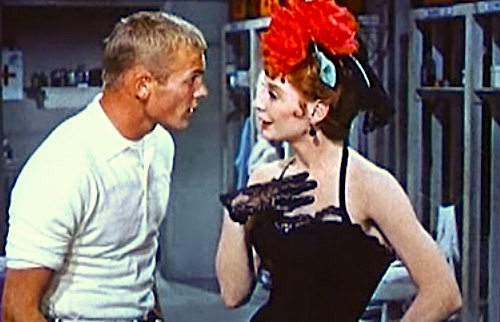
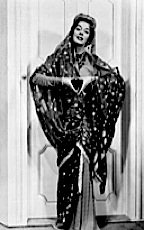






 Richard Hooker’s M*A*S*H — rejected by 21 publishing houses. {“How many Army doctors could there possibly be?” they must have scoffed. “And who else would care?”)
Richard Hooker’s M*A*S*H — rejected by 21 publishing houses. {“How many Army doctors could there possibly be?” they must have scoffed. “And who else would care?”)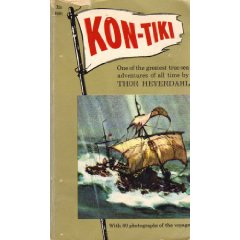 Thor Heyerdahl’s KON-TIKI — rejected by 20 publishing houses. (Yes, THAT Kon-Tiki. “This might appeal to people who sail for pleasure, but can we afford a novel for the yacht-owning niche?”)
Thor Heyerdahl’s KON-TIKI — rejected by 20 publishing houses. (Yes, THAT Kon-Tiki. “This might appeal to people who sail for pleasure, but can we afford a novel for the yacht-owning niche?”) Dr. Seuss’ first book, AND TO THINK THAT I SAW IT ON MULBERRY STREET — rejected by 23 publishing houses. (“Do we really want to confuse children?”)
Dr. Seuss’ first book, AND TO THINK THAT I SAW IT ON MULBERRY STREET — rejected by 23 publishing houses. (“Do we really want to confuse children?”) Richard Bach’s JONATHAN LIVINGSTON SEAGULL — rejected by 18 publishing houses. (“The only person I have ever known who cared about seagulls was my mad great-aunt Kate, who spent her last years wandering down to the beach to offer them caviar on crackers. Next!”)
Richard Bach’s JONATHAN LIVINGSTON SEAGULL — rejected by 18 publishing houses. (“The only person I have ever known who cared about seagulls was my mad great-aunt Kate, who spent her last years wandering down to the beach to offer them caviar on crackers. Next!”)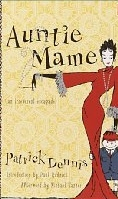 Patrick Dennis’ AUNTIE MAME — rejected by 17 publishing houses. (I have no idea what they were thinking here; perhaps that it was really a memoir?)
Patrick Dennis’ AUNTIE MAME — rejected by 17 publishing houses. (I have no idea what they were thinking here; perhaps that it was really a memoir?)





 PS: yes, I know that this series has been long and dense, but I have a fabulous reward in store for you at the end of it: a guest post from an author I’ve been eager to get here to talk to you for a very long time. Hint: he’s funny, and appropriately for the season, there will be small, fluffy animals involved.
PS: yes, I know that this series has been long and dense, but I have a fabulous reward in store for you at the end of it: a guest post from an author I’ve been eager to get here to talk to you for a very long time. Hint: he’s funny, and appropriately for the season, there will be small, fluffy animals involved.


